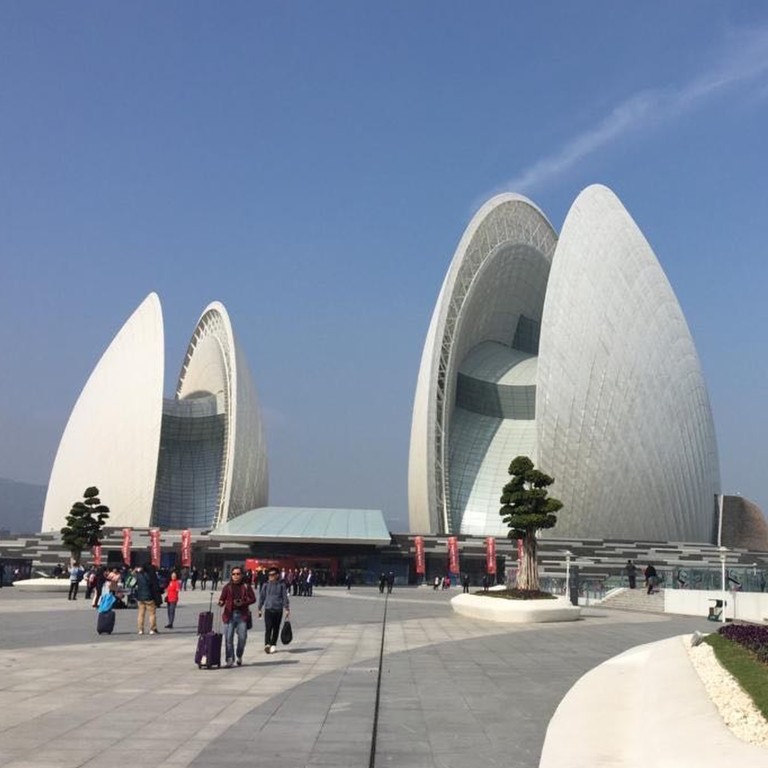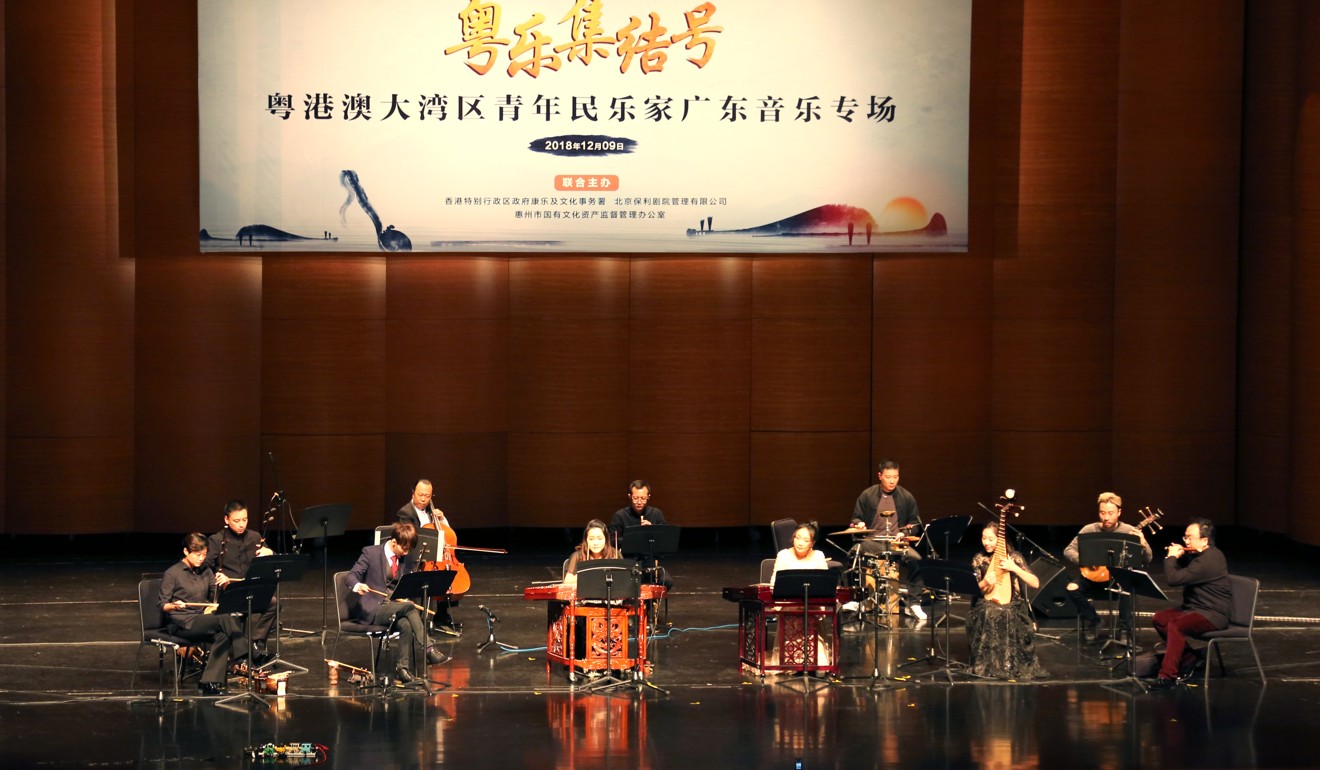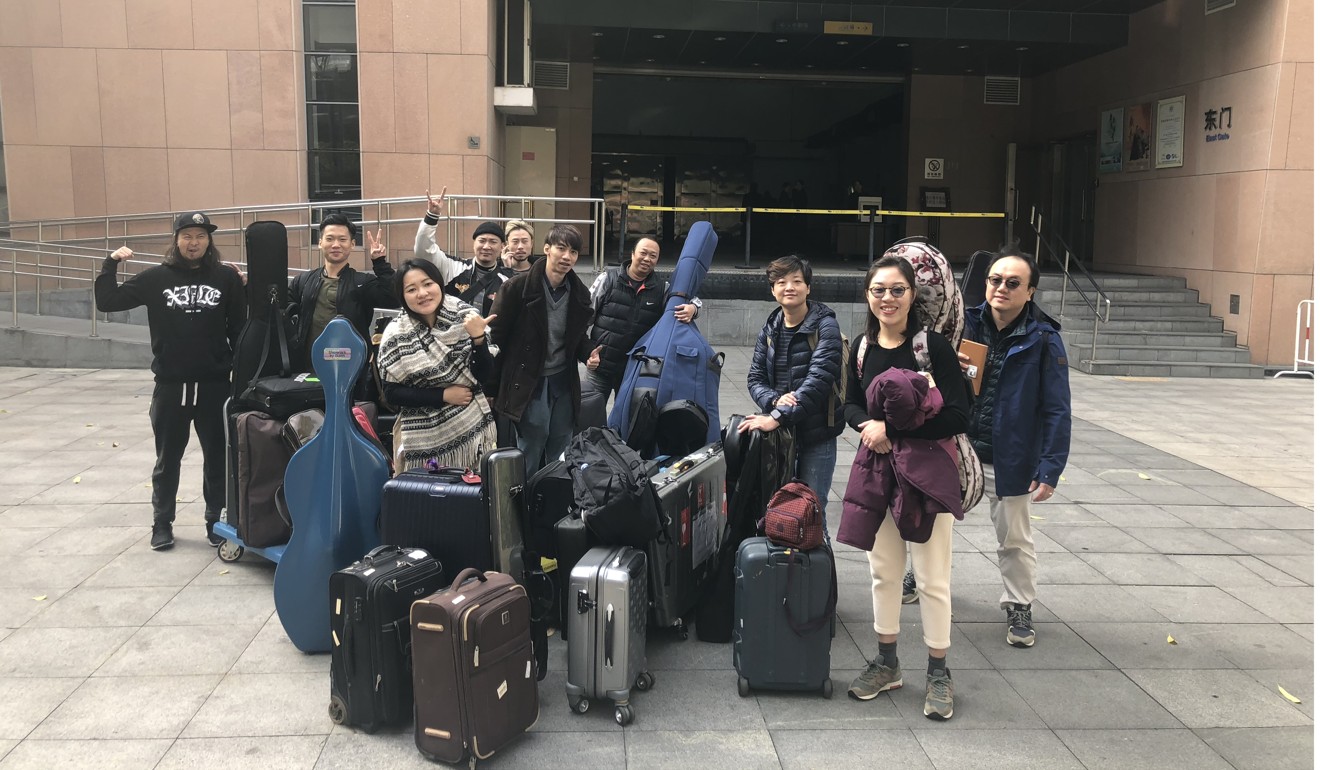
China’s Greater Bay Area scheme opens up doors for Hong Kong musicians with HK$140 million cultural exchange programme
- Eleven local performing arts groups undertake government-funded tours of glitzy concert halls in the region
Hong Kong’s arts and culture sector has been taking advantage of China’s “Greater Bay Area” plan, with a government-funded programme sending 11 local performing arts groups on tours of glitzy concert halls in the region.
Engineered by the city’s Leisure and Cultural Services Department (LCSD), musicians ranging from a jazz band to a full symphony orchestra have put on shows since November across neighbouring Guangdong.
The tours were made possible by a HK$140 million (US$17.85 million) cultural exchange programme spanning the next five years, which was promised in last year’s Hong Kong budget.
“We spearhead the exchanges in many ways, such as in artistic resources and management experiences, with hand-picked performing groups of proven quality,” Elaine Yeung Chi-lan, the LCSD’s assistant director, said.
“We hope these exchanges will build many cultural bridges that are mutually beneficial, as there are things we can learn from each other.”

The Chinese government wants to integrate and transform Hong Kong, Macau and nine cities in Guangdong into a huge economic, innovation and technology hub to rival Silicon Valley and other bay area urban centres around the world.
Recent BTS concert ticket fail highlights all that is wrong with Hong Kong’s sale system
The region has a string of theatres and concert halls old and new, but few performers offering quality programming outside Hong Kong, which itself lacks decent venues.
Veteran music educator Yip Wai-hong of the Pan-Asia Symphony Orchestra, which he founded four decades ago, said: “We perform 11 concerts a year in Hong Kong, but in the Greater Bay Area we did three at different halls only last month, and will do another four in April.
“We presented our teenage award-winning violinist Wong Pui-ying with a Tchaikovsky concerto, as well as Mussorgsky’s Pictures at an Exhibition, with animations which were all made in Hong Kong. The audience liked it,” the 88-year-old said.

Family and children’s themes are the preferred content, Yeung said, but jazz and modern Cantonese music are also on the approved list. The cultural exchange scheme kicked off with a three-evening show in Zhongshan last November by local jazz masters including Eugene Pao, Teriver Cheung, Jun Kung and their bands.
But Yeung added: “We are the facilitators and do not have the right to approve a programme for public performance, which belongs to the mainland authorities. So far all of our programmes have been given the green light, as we don’t want to involve politics in our shows.”
Steven Chan, ‘Mr Fixit’ of Hong Kong Philharmonic Orchestra for 40 years … and counting
Guangdong’s Department of Culture told the Post that performing groups from Hong Kong and Macau staged a total of 574 shows in the nine mainland cities of the bay area in 2017 and 2018. They were expected to bring in 400 in 2019, a spokesman said.
“Currently there are 98 professional performance venues in the nine cities,” the department said. “But business for theatres in cities other than Guangzhou and Shenzhen is not promising. Venues often have a rather long idling period.”
In Guangzhou and Shenzhen, the region’s two most developed mainland cities, some venues host more than 200 shows a year. But facilities in the other seven called it a good year if they put on 50, the spokesman added.
Most popular were concerts by major stars from Hong Kong and the Philharmonic Orchestra, as well as plays by the Théâtre de la Feuille – a drama troupe founded in Paris by local artist Wong Chun-tat.

According to Heidi Chu Ching-han, the LCSD’s audience-building chief, discussions have been taking place to secure a pass for all Hong Kong performances in the Greater Bay Area. Current practice requires a permit from each of the three major groups controlling a string of venues on the mainland – AC Orange, the China Performing Arts Agency, and Poly Culture Group.
MTR to review baggage rules as top orchestras join criticism of ban on large instruments
“I would never have known which door to knock on without the LCSD’s lead,” said Ricky Yeung, leader of the 11-member Cantonese Music Assembly, which toured Huizhou and three other cities last month and will head to Shenzhen and Guangzhou in March.
“As performing artists, we need a platform to show our skills so that audiences know about us. So the initial contact is really the key, and that’s where the LCSD provided us with access and funding.”

Ricky Yeung is a bamboo flute player, and performed with the Hong Kong Oratorio Society at the Zhuhai Opera House last month. The venue boasts glamorous architecture with an exterior in the shape of a scallop shell, but is not accessible for wheelchair users.
Elaine Yeung said despite the advanced technology and modern conveniences, the concept of accessibility had not yet permeated mainland performing arts venues.
Radio host Shum Yat-fei attended the Zhuhai concert, and had to leave his wheelchair outside.
“There were no facilities for wheelchairs like at the Hong Kong Cultural Centre Concert Hall,” he said.
Additional reporting by Su Xinqi

